Identifying Meteorites
Identifying Meteorites - How to Identify Meteorites
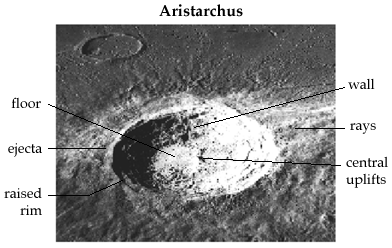
How to identify Meteorites
Are meteorties
only found in craters?
Common
terrestrial
rocks are often mistaken for meteorites
see also Meteorites...
see also Common Meteorite Minerals...
see also Meteorite Cratering on Earth...
see also Queensland's Mystery
Crater...

Metallic Meteorite
How to identify Meteorites
The following characteristics are common to most meteorites.
1. Most meteorites contain some iron and tend to be very heavy. Iron meteorites are approximately four times as heavy as a terrestrial rock of the same size; stone meteorites about three times as heavy.
2. Meteorites usually have a smooth surface with rounded corners. They are never porous like some types of lava (pumice, for example).
3. Fresh meteorites will have a dark gray or black surface. Weathered meteorites will appear brown or rusty.
4. The surface of most meteorites -- particularly if they have fallen recently -- will exhibit a "fusion crust," caused by burning in the upper atmosphere. At least some trace of fusion crust is usually visible on the surface.
5. Sometimes the surface will display tiny "flow lines," showing where melted material flowed off the surface upon atmospheric entry.
6. Indentations called "thumb prints" are also common. They really do look like they were made by someone pushing their thumbs into soft clay. Thumb prints in solid iron meteorites will often consist of deeper, rounded holes -- plum-sized or larger.
7. The interior colors will differ, but after grinding or polishing, most will reveal tiny silver-metallic flecks. Solid iron meteorites have a very bright solid "chrome" interior when cut or ground.
8. Magnets are almost always attracted to meteorites. In fact, if your sample does not attract a magnet, it's about 99.9% certain that it is not a meteorite. Iron meteorites are very strongly attracted to powerful magnets, however a common refrigerator magnet may be too weak to demonstrate a noticeable pull towards a meteorite. If you are testing a potential meteorite with a magnet, first ensure that the magnet is not attached to any other metallic objects, then attach it to a piece of string. While holding one end of the string, touch the suspended magnet to the test rock and slowly back away.
Remember that there are also some terrestrial rocks that contain iron, as well as many manufactured materials that have been mistaken for meteorites in the past (rusted tools, cannon balls, artillery shell or bomb case fragments, iron foundry slag, etc.). Sometimes a laboratory test is necessary to determine the authenticity of a meteorite; sometimes a brief examination by an expert is all that is needed.
There are many different kinds of meteorites, some with unique characteristics which may be different from those listed above. These atypical meteorites are often very fragile and are prone to rapid deterioration. Unless they are actually seen to fall they are unlikely ever to be identified or recovered.
Of those atypical specimens that have been recovered, most have been found in barren deserts or in Antarctica, where the odds are very good that any found rock will be a meteorite. Hence, the preceding characteristics will probably apply to 99% of new meteorite finds.
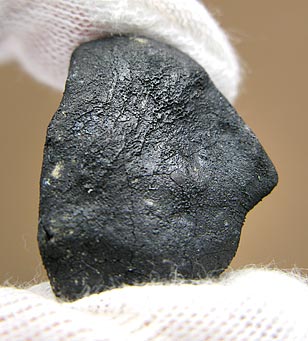
Stony Meteorite
Are meteorites only found in craters?
Meteorites do not always cause craters. Meteors (a meteorite, before it hits the ground) will sometimes explode and break up into many smaller pieces while still traveling rapidly through the air. These explosions can produce hundreds or even thousands of fragments, which may be scattered over a large area -- typically 25km long and 12km wide. This area is referred to as a "strewn field." Meteorites in strewn fields are sometimes found lying right on the surface.
By examining the surface of a meteorite, it is sometimes clear that it was once part of a larger mass, or that a smaller piece may have broken away from it. In such a case, an area search covering several square miles around the initial find may turn up the missing piece(s).
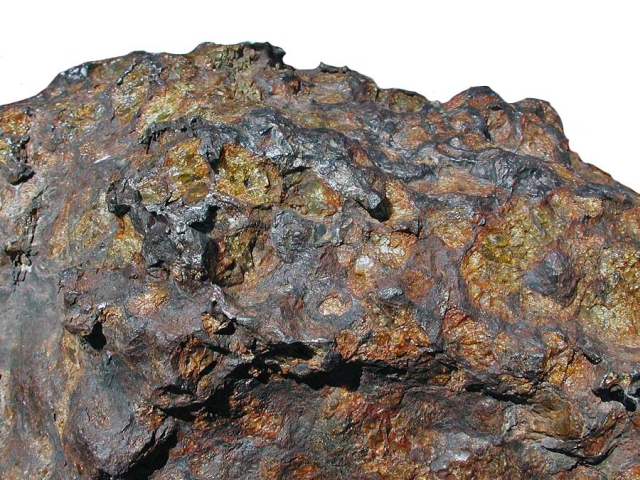
Metallic and Stony Meteorite
Common terrestrial rocks are often mistaken for meteorites
Common terrestrial rocks are often mistaken for meteorites , and we affectionately call them "meteor-wrongs."
Meteorites never hit the ground burning, no matter what you might see in science fiction movies. If you see a meteor fireball streaking across the sky, the odds are that it landed hundreds of miles away, not "just on the other side of those trees!" However, if you hear a sonic boom, then the fireball may well have burned out almost directly overhead (nearly 9km up), and you may be relatively close to the point of impact -- perhaps 35 to 55km.
Some examples that are NOT meteorites...
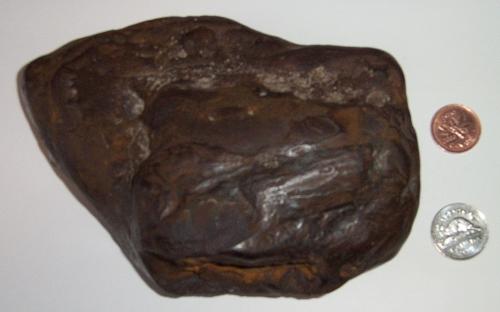
the sedimentary iron oxide ore hematite - soft, will mark paper with a red streak
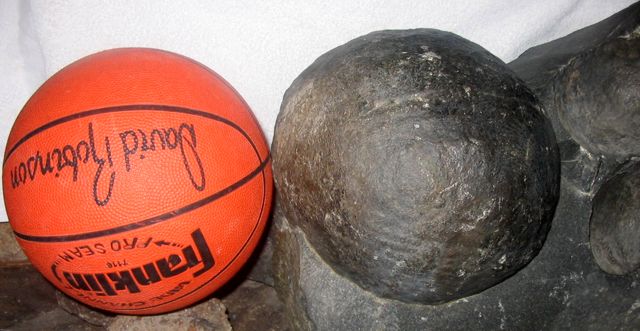
large sedimentary concretion in mudstone - note sedimentary bedding
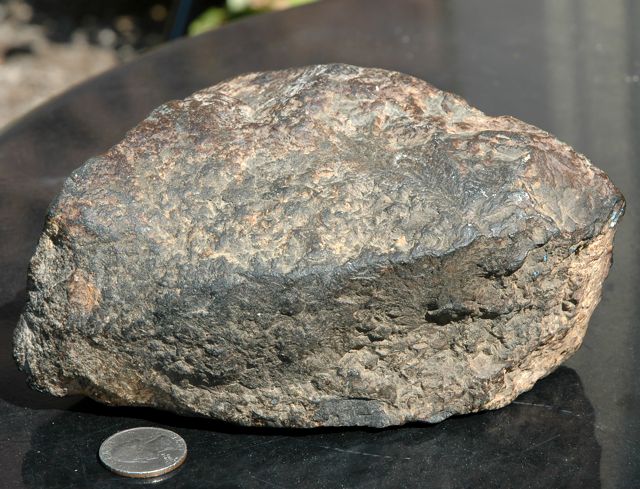
Mining slag (molten waste rock) - note flow lines throughout not just on surface
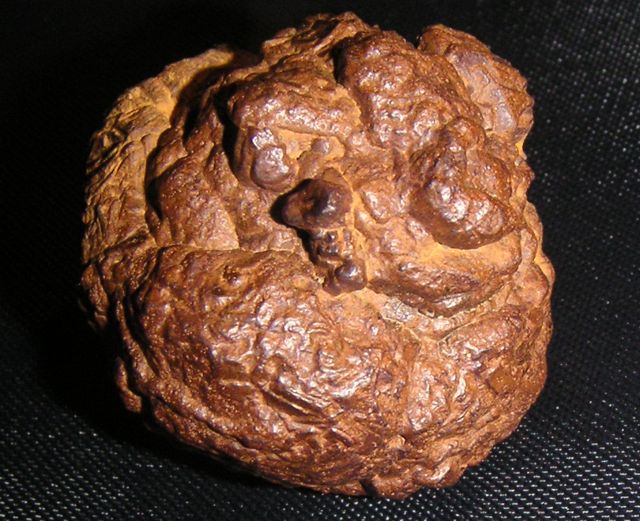
Iron concretion usually forms in anerobic swamps
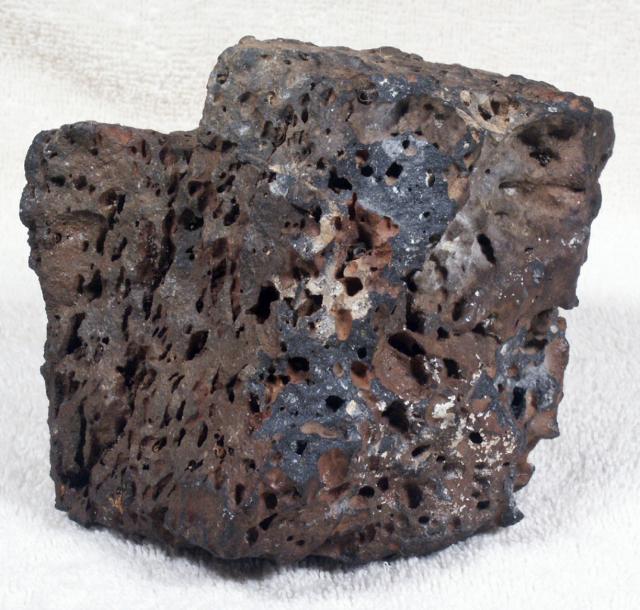
Vesicular basalt lava - gas bubbles expand on exit from volcano

